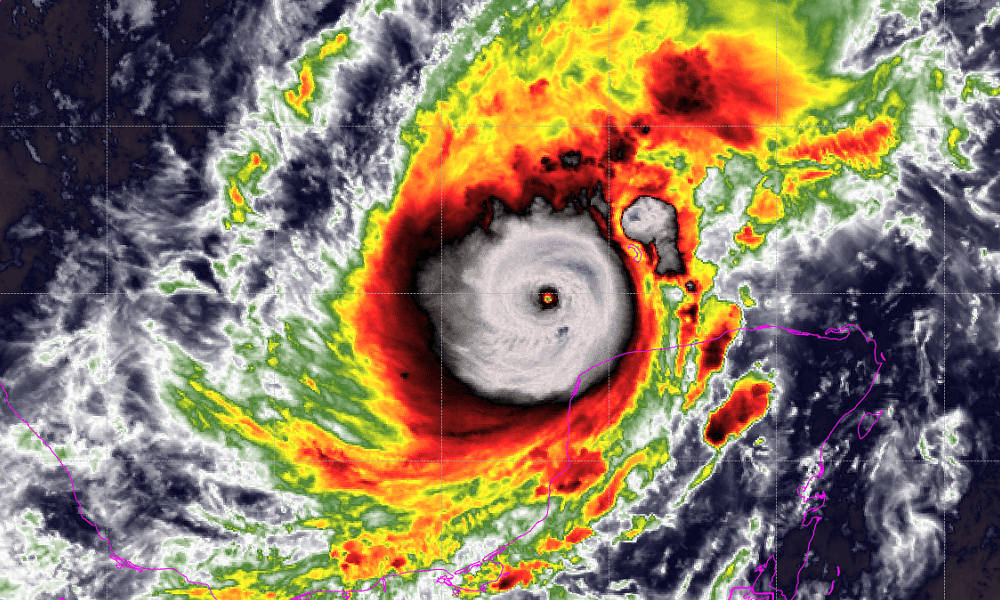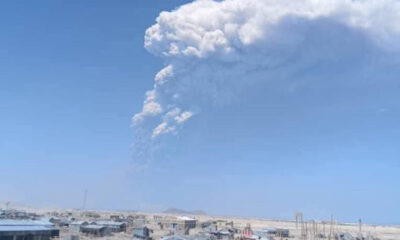Reviews
Hurricane Milton: A Wake-Up Call and a Look at the Most Powerful Hurricanes in U.S. History

More recently, hurricane Milton has evolved into what might be one of the most dangerous storms in the United States experienced in the last two decades. It has been intensified to its peak wind of 180 miles per hour, therefore making it a Category five hurricane according to the Saffir-Simpson scale. As citizens brace for potential destruction, no one is standing by idly. Thanks to government agencies and the support of Employer of Record services, thousands of trucks and workers are mobilizing for rapid recovery efforts in the disaster area. Thinking about nature and things that people can encounter in their everyday lives, it is high time to remember the five most destructive hurricanes in the USA history.
#1 — Hurricane Katrina (2005)
Katrina is one of the most famous hurricanes in the United States. It slammed the Gulf Coast in August 2005; it intensified to a Category 5 storm before striking Louisiana. Measured at 175 mph winds and a calamitous storm surge, Katrina led to much havoc, especially in New Orleans. Some of the deadliest floods occurred afterward, with more than 1800 people killed, and billions of dollars lost in the floods. As a result, the impact of Katrina is still being felt to the present in the drafting of the disaster response and management paradigms.
#2 — Hurricane Harvey (2017)
Hurricane Harvey struck the Texas coast as a Category 4 hurricane in August 2017. While its, sustained winds were as high as, 130 mph, it was the rate of rainfall that made this type of storm infamous. Harvey released more than 60 inches of precipitation in some parts of southern Texas, devastating floods in metro Houston. The disaster occurred leaving thousands without homes and largely estimated at $125 billion. The great magnitude of operation in disaster proved how important it is to have proper planning and response to flooding disasters.
#3 — Hurricane Irma (2017)
Hurricane Harvey was followed by Irma, a hurricane that hit the Caribbean and Florida, in September of this year. As Irma had winds exceeding 180 mph it was initially ranked as a Category 5 hurricane. It struck the Virgin Islands, Puerto Rico, and almost all of the region of Florida. Hurricane Irma affected millions of residents by knocking out power, destroying homes, disrupting businesses, and costing about $50 billion. This storm is not an isolated instance and as we have seen the coastal regions continue to struggle and suffer losses due to climate change.
#4 — Hurricane Maria (2017)
After Irma hurricane, Maria hurricane struck Puerto Rico as a category four storm in September 2017. It had a speed of 155 miles per hour and it destroyed infrastructure, becoming the cause of a humanitarian disaster for everyone who lived on the island. The long-term effects of Maria are still felt today, with the death toll estimated to be over 3,000. The event of the disaster made people experience the difficulties of reconstructing and restoring the damage done by severe storms.
#5 — Hurricane Michael
Hurricane Michael a Category 5 hurricane made landfall on the Florida Panhandle in October 2018. As per the record, it ranks among some of the most extensive hurricanes ever to make landfall in the continental United States with a wind speed of 160mph. Michael quickly caught everyone off guard and left a great deal of impact on cities like Mexico Beach and Panama City. Approximately $25 billion was damaged in the storm thus showing the need for proper time and ways of evacuation and precaution.
Conclusion
Hurricane Milton is a stark reminder of nature’s power and unpredictability. The history of powerful hurricanes in the U.S. serves as a sobering backdrop to the current events unfolding in the Gulf. As we navigate the challenges posed by such storms, the importance of preparedness, community resilience, and effective support systems becomes clear.
Understanding these factors is vital for ensuring that communities not only withstand these disasters but also recover and thrive in their aftermath. With the help of organizations like Revimate, businesses can remain agile and ready to face whatever challenges come their way, regardless of their country of origin or operational focus.

-

 World3 days ago
World3 days agoEthiopian volcano erupts for first time in thousands of years
-

 Legal1 week ago
Legal1 week agoMichigan man JD Vance sentenced to 2 years for threatening Trump and JD Vance
-

 Legal1 week ago
Legal1 week agoWoman in critical condition after being set on fire on Chicago train
-

 World1 week ago
World1 week agoHurricane Melissa registered 252 mph wind gust, breaking global record
-

 Legal6 days ago
Legal6 days agoSuspect in San Diego stabbing shot by authorities after fleeing into Mexico
-

 Legal1 week ago
Legal1 week ago1 dead, 2 injured in shooting at Dallas Walmart parking lot
-

 Legal7 hours ago
Legal7 hours agoUtah Amber Alert: Jessika Francisco abducted by sex offender in Ogden
-

 Health6 days ago
Health6 days agoMarburg virus outbreak in Ethiopia grows to 6 confirmed cases




